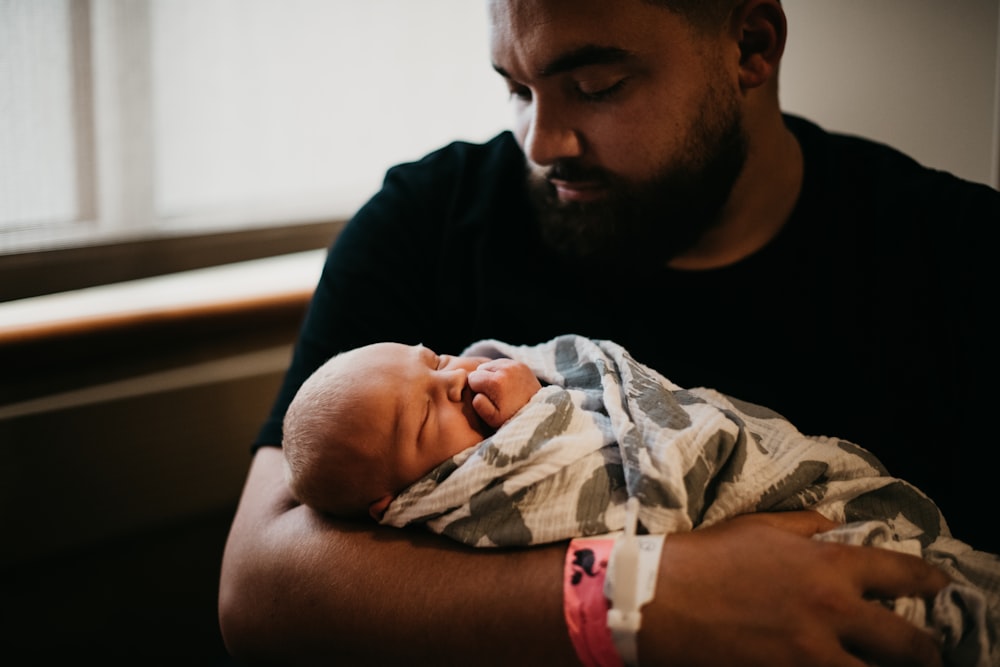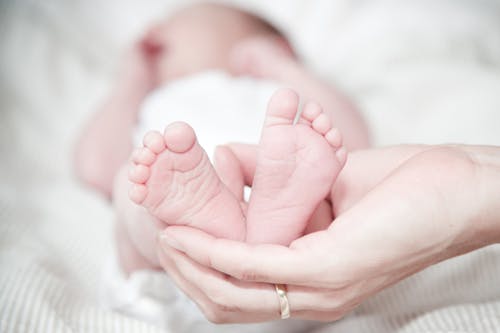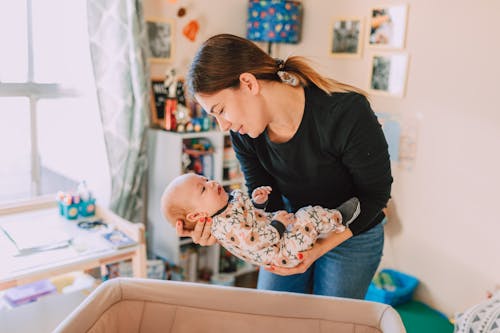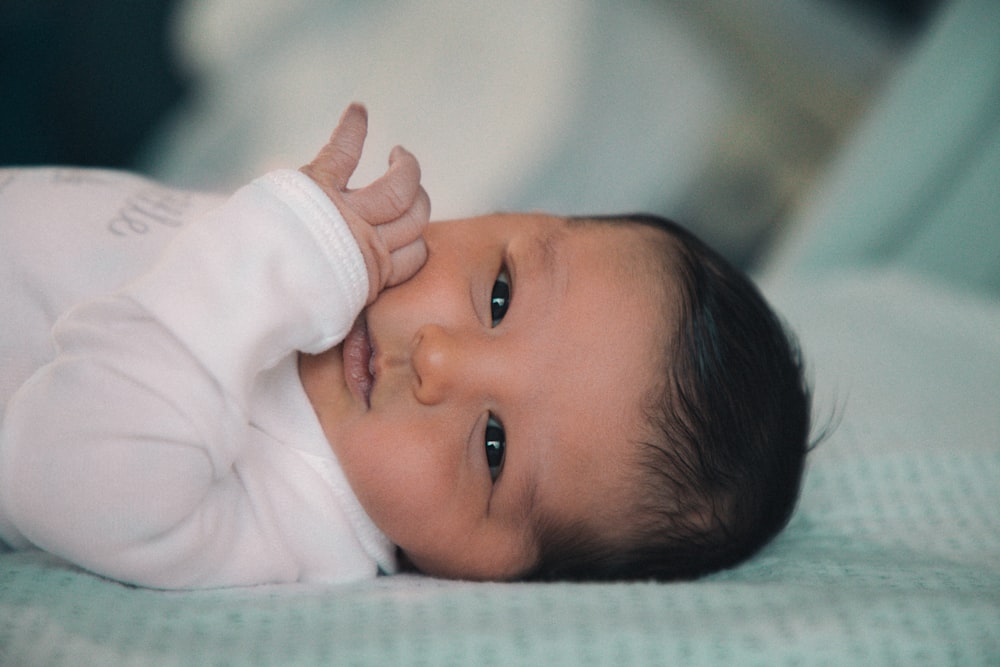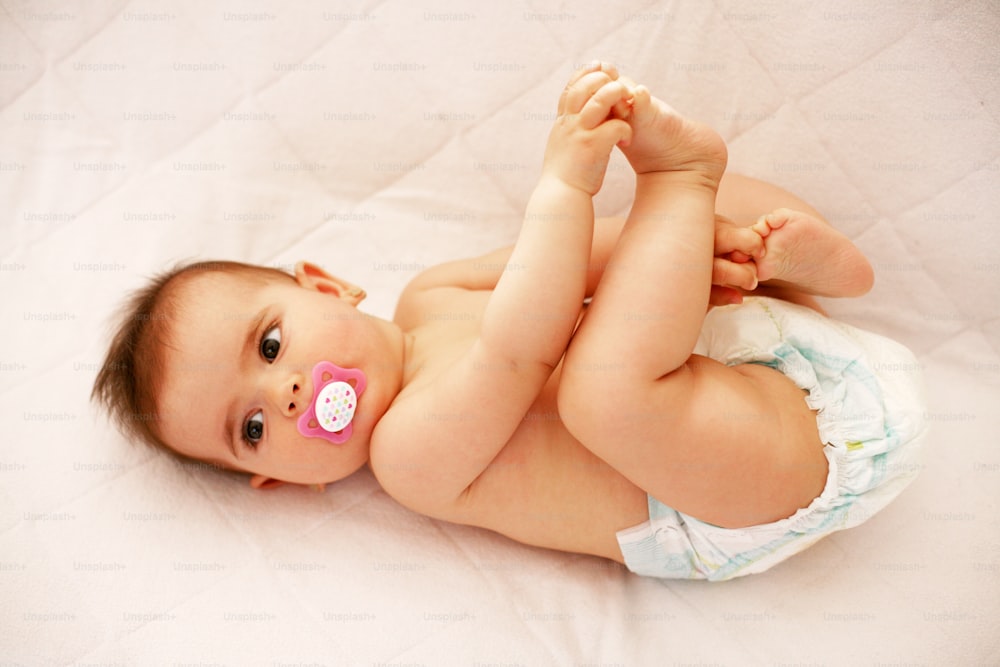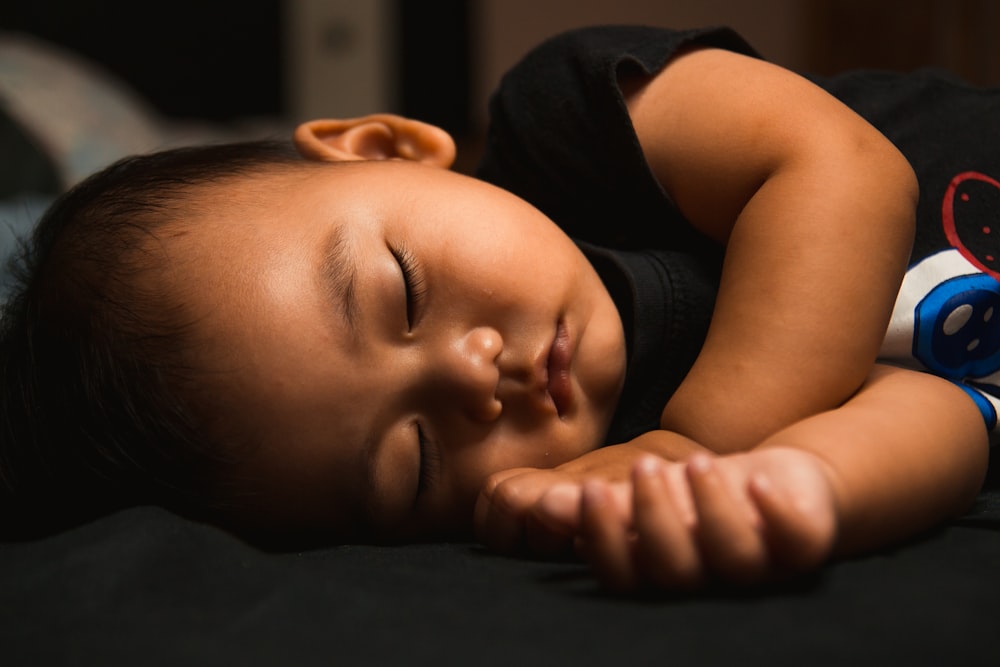A new baby is a joyous occasion. There are many thrills and beautiful moments with the arrival of a newborn. But babies also require our constant care and attention to ensure their safety. Creating a safe sleep environment should be at the top of all new parents’ lists! Crib placement, mattress type, room temperature, and a snug and fitted sheet are just a few things parents must consider when designing their baby’s nursery.
There are plenty of aesthetic tips on designing a nursery. But it’s also essential that new parents follow safe sleep guidelines and recommendations to reduce the risk of SIDS and other potential dangers. SIDS, or sudden infant death syndrome, has no known cause. However, enough research points to things parents and caregivers can do to reduce the risk.
SIDS is the sudden death of a healthy infant under one year of age. While the exact cause of SIDS is unknown, the accepted theory is that SIDS occurs when there is a problem in the baby’s brain that controls breathing and waking up from sleeping.
So, what can parents do to prevent the risk of SIDS? What other sleeping dangers should moms and dads look out for? We have answers to all your questions and maybe a few you didn’t think of before!
SIDS Prevention and Risk Factors
Because SIDS is not fully understood, there is no guarantee, even when following every safety tip, that it won’t occur. However, research shows that babies whose parents follow some simple guidelines possess a much lower chance of passing from SIDS than those who don’t. There are also some risk factors that parents cannot avoid, such as gender, race, and premature birth in some instances.
SIDS Risk Factors
- Sex: Boys have a slightly higher chance of SIDS than girls.
- Age: The highest risk is between two and four months old.
- Race: SIDS occurs more often in Black, Native American, and Alaska Native infants.
- Family history: Babies with siblings who died of SIDS are at higher risk of SIDS.
- Secondhand smoke: Babies who live with smokers have a higher risk of SIDS.
- Premature birth: A premature birth or low birth weight increases the chance of SIDS.
- Drug or Alcohol use while pregnant: Babies born to mothers who smoked, drank, or participated in recreational or illegal drug use have a higher chance of SIDS.
- Lack of prenatal care: Babies whose mothers did not receive adequate prenatal care have a higher chance of SIDS.
- Mother’s age: Babies born to mothers twenty or younger have a higher risk of SIDS
SIDS Prevention Tips
Following these safe sleep tips recommended by the Mayo Clinic and the American Academy of Pediatrics may reduce the chances of SIDS.
- Back to sleep. Place your baby to sleep on its back every time you or anyone else puts them to sleep for the first year of life.
- DO NOT put your baby on the stomach or side to sleep, no matter what your mother, mother-in-law, great aunt, or anyone else advises or tells you they did with their children. Periods of “tummy time,” when the baby is awake and the caregiver is in the room with them, help a baby build muscle strength. But the baby should never be left alone during tummy time.
- Once your baby can roll over themselves, they may roll over in their sleep. You do not need to roll them back; however, continue to place them to sleep on their back for the first year of life.
- Use a firm, flat mattress. Ensure the mattress does not sit at an angle higher than 10 degrees. Avoid placing your baby on thick, fluffy padding, such as lambskin or a thick quilt.
- Keep the crib bare. Don’t use pillows, fluffy toys, or stuffed animals in the crib. Do not use blankets or crib bumpers. They can cause problems with breathing if your baby’s face presses against them.
- Ensure the crib or bassinet you use meets existing federal safety standards.
- Babies should sleep in cribs only. Car seats, strollers, swings, and bouncy chairs should not be used in place of a crib for naps and nighttime sleep. A baby sleeping during a car ride or a few minutes in a swing is OK. But create a sleep routine that includes placing your baby in their crib for regular sleep.
- Don’t overheat your baby. Keep the room comfortable; between 68 and 72 degrees Fahrenheit is recommended. If the room is cold, keep your baby warm using a sleep sack. Or dress your baby in layers instead of using blankets.
- There is no evidence that swaddling prevents SIDS; however, some babies prefer the comfort of a swaddle. Do NOT use weighted swaddleds; stop swaddling when your baby begins to show signs of rolling over, around three or four months old.
- Remove hats and headbands before placing your baby in their crib to sleep.
- If possible, breastfeed your baby. Breastfeeding for at least six months to a year lowers the risk of SIDS.
- Have your baby sleep in your room. Your baby should sleep in your room with you, but NOT in the same bed. Babies should sleep alone in a crib or bassinet with a mattress designed for infant bedding. Your baby should sleep in your room for at least six months.
- Adult beds aren’t safe for infants. A baby can become trapped and suffocate between the headboard slats. A baby also can get trapped in the space between the mattress and the wall. Lastly, babies can suffocate if a sleeping parent accidentally rolls over and covers the baby’s nose and mouth. If you want your baby close to you, consider a bedside bassinet.
- Don’t use baby monitors and or devices that claim to reduce the risk of SIDS. These devices cannot prevent SIDS. And they should not be used instead of safe sleep practices.
- Offer a pacifier. Sucking on a pacifier at nap time or bedtime may reduce the risk of SIDS. Do NOT use a pacifier with a strap or a cord while your baby is in the crib. If breastfeeding, waiting three to four weeks before offering a pacifier is recommended to establish a nursing routine.
- If your baby is not interested in the pacifier, don’t force it. Try again another day. If the pacifier falls out while you sleep, don’t put it back in.
- Vaccinate your baby. There is no evidence that shots to protect against diseases increase the risk of SIDS. Some evidence shows that such shots may help prevent SIDS.
Additional Safe Sleep Tips
In addition to SIDS prevention, there are some other safe sleep tips parents should follow to ensure their little one’s nursery is a safe environment.
- Don’t place the crib by a window. Windows often have blinds or cords that present a strangulation danger to your baby. Additionally, once your child is old enough, they may learn how to unlock windows, or an adult may unintentionally leave a window open. All windows should have child safety locks.
- Use cordless blinds or attach a cord hook towards the top of the window frame to wrap cord blinds.
- Don’t hang artwork or heavy objects above the crib. Artwork and paintings may look cute over your baby’s crib, but they present a hazard should the artwork fall. Plus, once your baby can stand in their crib, they’ll grab it. Instead, consider wall decals or placing framed or heavy artwork on opposing walls to give your baby something to look at while awake!
- Remove your baby’s mobile once they can sit up. Mobiles, like artwork, present a hazard to your baby once they can sit up and reach it. They may pull the mobile on top of them or become entangled in the cords. Small pieces may also become choking hazards.
- Follow the manufacturer’s recommendations on when and how to lower your baby’s crib height. Once your baby can sit and stand up, their crib should be lowered to prevent them from climbing out and falling.
- Use a humidifier. Humidifiers help keep the room breathable and moist, essential when your baby is too young for medications and might have a stuffy nose or cough.
- Keep all toys out of your baby’s crib. Newborns and infants do not need toys in or attached to their cribs. They present suffocation, strangulation, and choking hazards.
- Keep all objects out of your baby’s reach, including cords, outlets, toys, blankets, pillows, the changing table, and anything else.
September 7, 2023, by L. Elizabeth Forry

